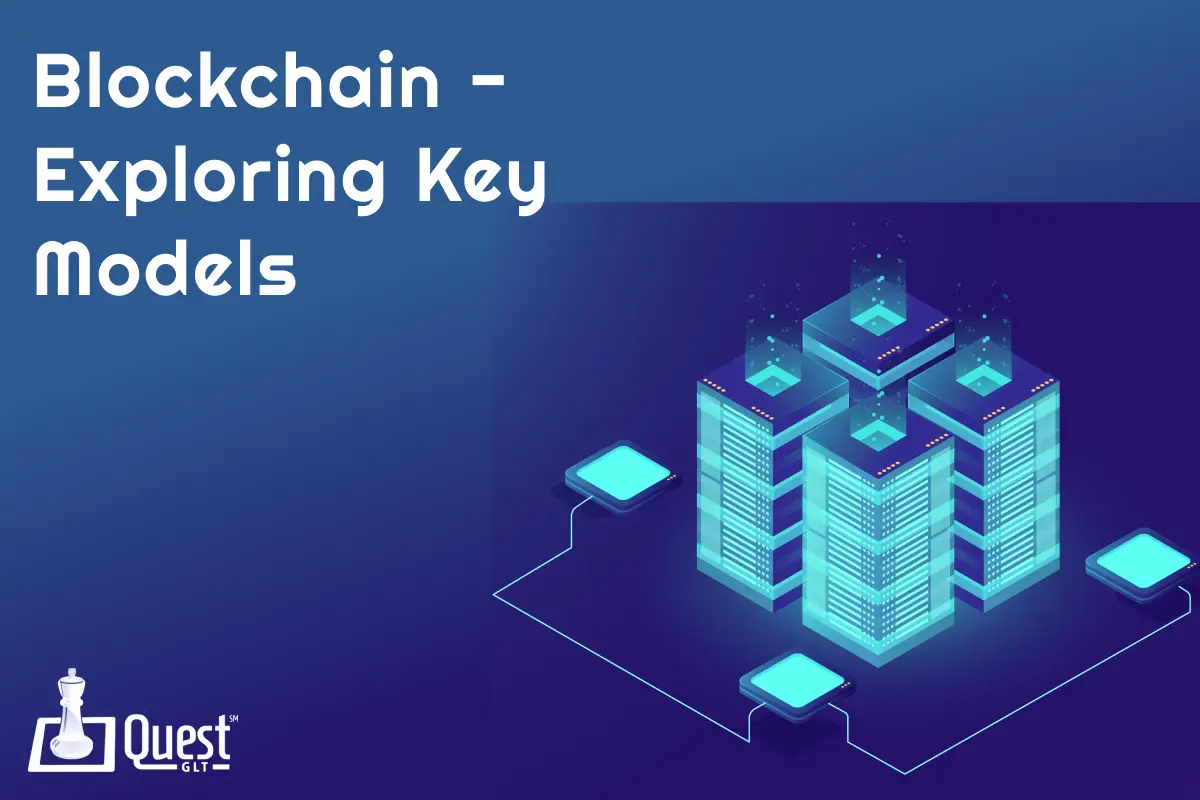
Introducing the blockchain breakthrough, where the revolutionary technique of data storage and access has been changed forever. Typically, a blockchain would be a distributed, decentralised database for transactions across thousands of computers (or nodes). This technology provides transparency, immutability, and security that make it a choice for different areas of application.
Therefore, the query is how data is written to a blockchain Development. In this blog, we will take a look at the different models that describe how data is written to the blockchain. Each model uses different approaches and algorithms to ensure that the integrity and authenticity of the stored data is maintained.
Before jumping into these models, let's look into the basics of blockchains Services. A blockchain, in essence, is a structurally complex object with blocks functioning as data containers. Such blocks are joined by cryptographic hashes to build a chain of information. Each block is a sequence of transactions called timestamps that the network members have validated.
The main attribute of the blockchain is its decentralized feature. As opposed to old centralised databases that are controlled by one single organization, a blockchain is distributed on numerous nodes. This decentralisation provides a guarantee of trust as well as eliminates the need for a middleman while performing transactions.
A Brief Overview of Blockchain Technology
Blockchain technology, created by Satoshi Nakamoto in 2008, is a made-up way to store information about trades among different computers called nodes which are connected. Just like in a blockchain, every transaction is a block that is connected to the previous block constructing a chronological and immutable register of all the agreements. Blockchain is decentralized, so data integrity and security are ensured using a consensus method and middlemen are avoided, thus creating a trustless environment for doing any business. Transactions that undergo blockchain procedures have cryptographic encryption, connections, and decentralization, making them difficult to alter or mess with. This feature of immutability and transparency especially suits such sectors where the integrity and authentication of the documents are of prime importance. There has been an increasing number of networks built on top of Blockchain due to their distinct attributes, protocols, and data-writing systems. Analyzing the data writing models and their inherent complexities is the key factor that ensures that networks are safe and secure.
Overview of Data Writing in Blockchain
The procedure of data writing into a blockchain is an operation of adding new data blocks to the ongoing chain of blocks using cryptography. This process is a multilevel one with many components in the various stages to ensure the accuracy and integrity of data.
1. Transaction Formation:
This procedure usually starts with the preparation of a transaction and subsequent creation of the necessary documents. An operation can imply a transfer of value whether this is the case in the monetary framework, or record some other kind of data.
2. Validation:
When a proceeding is made, it has to be checked with the network. Utilizing other types of nodes in the network, the process of validating will also employ other norms like proof of stake, proof of work, and practical Byzantine fault tolerance.
3. Block Development:
Values from valid transactions are pooled in blocks. These properties of each block include the distinctive identifier (hash), reference to the previous block, & timestamping of the data. The order of transactions block-wise may differ concerning different data write models and consensus processes.
4. Consensus Method:
The collection way the network uses determines whether transactions are checked and in what order, crypto consensus protocol. Various agreement solutions ( e.g. proof of work, proof of stake and practical Byzantine fault tolerance), use the algorithms that are different and they have the unique criteria for choosing the next block in the chain.
5. Block Addition:
When a constructed and verified block is added to the current chain of blocks, it builds confidence among all system users in the integrity of the entire system. This method includes the consequence of the corresponding prev hash to the last block and the re-calculation of the hash of the newly created block. The network empowers a block once its information is dictated so that transaction history becomes the ubiquitous record.
How Data is Written to a Blockchain?
Data is written to a blockchain by organising transactions into blocks, which are then checked by the network of nodes to verify they meet specific rules and protocols of the blockchain model. These blocks are then combined into blocks, with each one connected to the earlier one using a cryptographic hash. This develops a chain-like structure, which offers a name & acts as the cornerstone for its security & immutability.
After the block is developed, it goes through a consensus mechanism to guarantee that all network members agree on its validity. This technique includes - PoW, PoS, or other decentralised approaches. Once consensus has been attained, the block is uploaded to the blockchain and becomes a permanent part of the record.
Continuous reproduction and interaction among all participating nodes guarantee that each node has an identical copy of the blockchain, offering redundancy while improving information reliability & safety. This method maintains the integrity, security, & immutability of the data recorded, making it a trustworthy & dependable solution for a variety of purposes.
Model 1: Proof of Work (PoW)
Proof of Work (PoW)is a frequently utilized consensus algorithm in blockchains, originally developed by Bitcoin. In this way, individual members of the network - called - Miners spend a lot of energy and turn into high computing power just to solve certain intellectual tasks. The first computer predator to solve the puzzle has the authority to add a new block to the blockchain and is rewarded with the newly printed cryptocurrency. Finally, the mode is in the manner of constantly finding a pseudo-random number, called a nonce, and putting it to the block's data. The miner collects the stream of data together and calculates the hash out. He then checks if it is observing certain conditions. This competition underpins the fact that the blockchain is safe and only changes the immutable ledger, making it more reliable to security risks. Nevertheless, the PoW method possesses its calamities such as high power expenditure, and environmental objections. These are the machines that are being used by the chains of a blockchain which have their preferences for being the methods of a consensus mechanism due to the reasons being; the unalterable, incorruptible and violence-resistant.
Model 2: Proof of Stake (PoS)
Proof of Stake (PoS) – a consensus mechanism – is considered to be an eco-friendly alternative to the Proof of Work (PoW) protocol as long as most of the mining is done by the nodes operating on non-renewable energy sources. In the process, called PoS, validators are chosen to perform new block developments based on their coin holding. Through this technique, a large computation capacity and bothersome energy use are going to be minimized. As a result, PoS becomes more environmentally friendly and energy-efficient. As to PoS-based blockchains, they do not need to process transactions every second (in a decentralized system) as PoW-based blockchains do. On the other hand, "Nothing at Stake" may appear, as most validators can validate masses of sub-basing chains during the parallel process of consensus, so no agreement is reached. For PoS protocols, these techniques are employed to discourage validators from participating in all the other chains as well.
Model 3: Delegated Proof of Stake (DPoS)
DPoS is a consensus mechanism that increases efficiency and effectiveness by utilising a delegated management system. It involves the casting of owners who present a different number of delegates to authenticate transactions and build blocks. The choice of candidates here is made through the vote of holders by the number of their shares, however. DPoS is flexible and offers faster block confirmation time, simpler accountability and decision-making. It, of course, eliminates centralization by giving token holders a means to keep the delegates accountable too. In contrast, it mainly depends on the credibility & integrity of the elected representatives which can corrode the blockchain’s security and decentralization process. Notwithstanding its faults, it is the best option for networks which place high value on speed, flexibility, and governance transparency.
Model 4: Validating Practical Byzantine Fault Tolerance (PBFT)
Promising Practical Byzantine Fault Tolerance aims at decentralized systems with Byzantine faults. During this process, a leader suggests a new block, which is verified and accepted by copies. The process uses a communication cycle comprising of digital signature that confirms the originality of every copy. It has quick transaction finality, thus making it the right choice for the apps that need to be confirmed immediately. Nonetheless, it consumes an excessive amount of resources and & is hardly scalable in big networks with numerous participants. It provided for a threshold of nodes that are faulty or malicious which might choose to break the consensus process if many such nodes exist. Consequently, when PBFT deployment is considered, a network which is secure and trustworthy is a must.
Model 5: Directed Acyclic Graph (DAG)
This strategy uses transactions as a basis and shows them as connected nodes in a graph-like structure. As it does not need miners or validators in a centralized manner, this consensus mechanism results in relatively fast transaction confirmation times and less expenditure of resources. DAGS however are still in the early stages of development and the process of initial adoption, but they offer scalability and decentralization. But ʻdouble-spendingʼ persists, as the attackers may make up a set of conflicting approvals each uniquely for their use. Using a variety of strategies and algorithms, we can prevent or minimise double-spending attacks. Researching & testing is imperative when it comes to concluding DAG-type blockchains.
Model 6: Hashgraph
Hashgraph is a consensus & data structure devised by Swirlds and is targeted at meeting the high speed, low latency and fairness in distributed applications. DAG is used for trades & their ordering. This is an algorithm which entails a requirement of transaction agreement through an electronic voting process. Such an approach helps nodes to exchange transactions and ancestors' details, opening the space for complete information on the transaction history and consensus choice. The "Hashgraph" indeed is a great option as it is speedy and has almost no latency at all. This feature makes it suitable for lots of applications, in particular, for financial and corporate businesses. On the other side, it of course has some constraints too, like research that never ends and a strong network connection. Regardless of those factors, it still has its place as a credible means of concordance.
Model 7: Tangle
“Tangle” is IOTA’s cryptocurrency network with a stand-out consensus and ledger mechanism—directed acyclic graph algorithm which aims to be scalable, decentralized, and feeless for the IoT ecosystem and its applications. Each of these forms of activity serves as a two-way stakeholder and validator which a network of interlinked transactions makes. The ability of blockchain to scale up efficiently offers a high level of concurrent transaction processing with reduced (block) confirmation periods and costs. It also emphasizes data quality by setting a fishy importance to every trade and pecking it out in a specific order. It is suitable for IoT areas where low bandwidth is an issue. Offline capabilities at their best are the right choice. While this has its bugs like double spending, & a lightning network to rectify these problems as well as make the network more reliable and efficient for real applications is an ongoing research process.
Conclusion
This blog post will not only answer your question - about how data is written to a blockchain but also brief you about blockchain technology. Blockchain offers different types of consensus models with each one being unique in terms of trust, security, scalability, and decentralization. Such systems encompass Proof of Work (PoW), Proof of Stake (PoS), Directed Acyclic Graph (DAG), Hashgraph, and Tangle. PoW provides a robust and safe consensus mechanism, but the massive energy consumption and limited scalability led to the creation of alternatives like PoS and DPoS. DAG models, like Hashgraph and Tangle, propose new structures and processes for scalability, verification speed, and decentralized participation. These models based on blockchain architecture try to solve the drawbacks of particular topologies and present prototypes of the most relevant cases, for instance, IoT and financial applications.
Analyzing both the requirements and goals of the intended blockchain network is crucial to selecting the suitable consensus mechanism. Security, scalability, energy efficiency, decentralization, and transaction capacity are the main factors when choosing the optimal consensus method. As a result of this innovation, there will be new types of consensus models and improvements to the blockchain networks which will increase their efficiency and effectiveness, and also open new possibilities which will be used across the industry. Knowing the strengths and weaknesses of each model allows blockchain developers and stakeholders to have a greater impact on the decisions, as it allows them to select networks that best fit their purposes.













